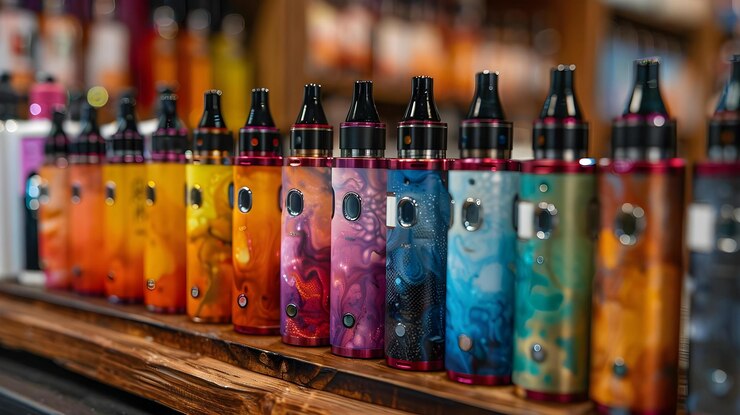
Introduction
Regulation has played a defining role in shaping the trajectory of the UK vape industry. From product standards to advertising restrictions, each layer of legislation influences not only how businesses operate but also how much they sell. With public health objectives at the forefront, the UK government has sought to balance accessibility for adult smokers with youth protection and product safety. As these rules evolve, they continue to exert a direct and measurable impact on vape sales volume across the country.
Market Surge Backed by Industry Demand
As vaping continues to dominate the alternative smoking market, distributors and retailers are expanding their reach to meet rising consumer demand. This trend has sparked considerable growth opportunities, particularly for those involved in vape wholesale, allowing them to stock a wide variety of products at competitive prices. With new flavors, devices, and accessories entering the scene frequently, bulk purchasing has become a cost-effective strategy for businesses aiming to keep up with trends. Retailers benefit from direct supplier relationships, better margins, and faster inventory turnover—positioning themselves as trusted sources for a growing customer base seeking quality and variety.
The Role of TPD and MHRA Oversight
The EU’s Tobacco Products Directive (TPD), which the UK retained post-Brexit with its own revisions, set the initial framework for legal vape sales. Restrictions on e-liquid bottle size, nicotine concentration, and tank capacity forced manufacturers to reformulate and repackage products. While initially disruptive, the clarity TPD provided also gave legitimacy to vaping in the eyes of many consumers.
Moreover, the MHRA’s (Medicines and Healthcare products Regulatory Agency) role in product notification added a regulatory seal of approval that increased consumer confidence. These regulatory benchmarks helped stabilise the market, although they limited flexibility and slowed new product introductions.
Disposable Ban and its Immediate Sales Impact
One of the most consequential developments in recent years is the UK’s proposed ban on disposable vapes, largely due to environmental concerns and underage access. Disposables once drove rapid sales growth due to their convenience, variety, and affordability—especially among new users.
With this segment phased out, retailers have seen a dip in overall unit sales. However, this has also prompted a pivot toward refillables and pod systems, which offer higher margins and encourage customer retention. While the volume dropped temporarily, the shift may lead to longer-term sales stability rooted in reusable devices.
Age Restrictions and Sales Verification Measures
The UK enforces a strict age limit of 18 for vape product sales, both in-store and online. Digital verification tools, Challenge 25 protocols, and mystery shopper audits have become standard. These efforts, while essential for compliance, have introduced friction into the sales process.
For retailers, these measures can lead to lost sales when age verification fails or delays occur—particularly online. However, they also protect legitimate businesses from penalties and contribute to industry credibility, which in turn supports long-term sales health.
Packaging and Promotion Limitations
The requirement for plain, child-safe packaging and the prohibition of marketing that targets non-smokers or minors have dramatically curtailed how brands can differentiate themselves. While these regulations reduce impulse purchases driven by flashy design, they have pushed brands to compete on product performance, reliability, and service quality.
This has raised the bar for product innovation but lowered the frequency of novelty-driven purchases. As a result, overall sales volume may see less volatility, but also slower growth unless paired with education and value-added engagement.
Flavour Restrictions: A Looming Concern
Flavours are a central driver of vape sales in the UK, especially among adults transitioning from cigarettes. The possibility of future flavour bans or restrictions, as seen in other countries, casts a shadow over the industry.
Even the hint of such regulation has already led to changes in consumer behaviour—stockpiling by loyal customers and hesitancy among new users. If enacted, flavour restrictions could drastically reduce sales volume, particularly for e-liquid brands and retailers dependent on variety as a unique selling point.
Regional and Local Council Interventions
Beyond national policy, some UK local councils have introduced stricter enforcement or campaign messaging that discourages vaping altogether. Pop-up inspections, retailer audits, and school-targeted outreach campaigns affect how products are stocked, sold, and perceived.
Retailers in areas with aggressive enforcement often report lower footfall and more cautious buying behaviour. However, consistent enforcement also helps weed out non-compliant sellers, levelling the playing field for legitimate businesses.
Regulation-Induced Consumer Confidence
Despite the constraints regulation imposes, it has also legitimised vaping as a safer alternative to smoking. Government endorsement—such as Public Health England’s affirmation that vaping is 95% less harmful than smoking—has been critical in encouraging adoption among adult smokers.
This trust, built through a regulated framework, ultimately supports long-term sales by attracting users who would otherwise remain hesitant. Regulations that enforce safety and quality can drive volume indirectly by converting sceptics into regular customers.
The Growing Demand for Vape Products
Vaping has seen a significant rise in popularity over the last few years, with many people choosing it as an alternative to smoking. As the demand for vaping products continues to increase, businesses are looking to capitalize on this growing market. Vape wholesale UK is a booming industry that offers various products ranging from e-liquids to vape kits, appealing to both novice users and experienced vapers. Retailers in the UK are now turning to wholesalers to provide them with high-quality products at competitive prices to meet their customers’ needs and expectations. This demand has led to an expanded market for suppliers.
Conclusion
Regulation in the UK vape market is a double-edged sword: it restricts freedom but fosters stability, limits growth but builds legitimacy. While sales volume has seen temporary dips following major regulatory shifts—particularly around disposables—the overall trend has shifted toward quality, compliance, and retention. The businesses best positioned for the future are those that see regulation not as an obstacle, but as a structure for sustainable success. As the regulatory landscape continues to evolve, so too will the strategies that drive volume in this uniquely responsive market.

